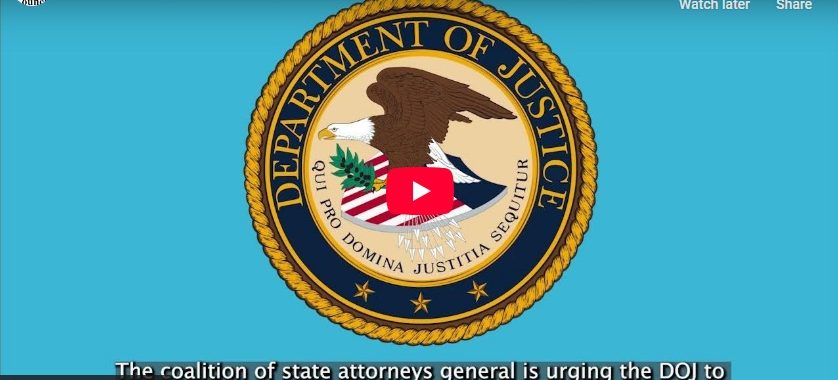Guest Column: That Bible Verse Is Not About Immigration (and Other Ways How Not to Read the Bible)

Recently on X, the Department of Homeland Security posted a video that featured immigration enforcement officers riding in Black Hawk helicopters and toting rifles to a cover of Johnny Cash’s song “God’s Gonna Cut You Down.” A narrator quoted Isaiah 6:8: “Here am I, send me.”
Democratic Congressman Hakeem Jeffries utilized a similar hermeneutic a few days later. Quoting from the Gospel of Matthew during a record-breaking speech to delay the passing of President Trump’s “Big, Beautiful Bill,” he said,
For I was hungry and you gave me something to eat. I was thirsty and you gave me something to drink. I was a stranger, and you invited me in. I needed clothes and you clothed me, I was sick and you looked after me, I was in prison and you came to visit me.
According to Jeffries, this passage applies to government assistance programs. “It’s not just in [U.S.] law, it’s right here in Matthew,” he said.
As Christian statistician Ryan Burge pointed out in a post on X, “there’s been empirical work” demonstrating how both the Right and the Left “emphasize Bible verses that [reinforce] their own political perspectives,” while conveniently ignoring the context of those verses.
Selective proof-texting points to how widespread and deep biblical illiteracy is. In addition to an ignorance of the actual content of the Bible, there is ignorance about what the Bible even is, and how Christians throughout the ages have used it. It’s bad when this ignorance shows up in politics. It’s sad when it shows up in our churches and Christian subcultures.
Who hasn’t seen a “verse of the day” calendar that overlays a singular motivational Bible quote on a field of flowers or a sunset? Before the DHS misused Isaiah 6:8, thousands of church conferences and short-term mission trips have, with “Here am I, send me” printed on banners and t-shirts. Often missing is Isaiah’s near-death experience and repentance beforehand, not to mention what God actually sent Isaiah to do (basically, fail as a prophet until he was eventually sawn in half).
Christian publishing, much of Christian music, and maybe the majority of Bible studies are afflicted with this same bad habit. Christian bookstores are full of “Bible promise” titles filled with de-contextualized verses meant to directly apply to the reader. But how many books of Bible curses are there, though the Bible includes those, too? How many Americans, in the habit of “verse plucking,” gladly claim Deuteronomy 28’s national blessings, but don’t read on about the national curses for disobedience that directly follow? How many Bible studies ask the question, “What does this verse mean to you” before truly wrestling with, “What does this verse mean?”
For years, I led a session for Christian school leaders entitled “How (Not) to Read the Bible.” But of course, the point isn’t to take the Bible out of anyone’s hands. Rather, it is to help us know and understand this essential way that God has made Himself known. Rather than treat Scripture as a fortune cookie, we have what Peter called, “the prophetic word more fully confirmed.” More confirmed than what? Astonishingly, Peter wrote that the Word of God is more sure than his own experience with Christ on the Mount of Transfiguration.
A simple, effective way to understand Scripture is to ask where the verse in question fits, within the chapter, the book, the testament, and redemptive history as a whole. Who was speaking, and why? For example, best not to quote an observation about God or life out of the middle of Job, when his friends give “darken[ing] counsel by words without knowledge.” Answering these questions always requires reading more than a single verse.
Also, we should always ask where a passage fits within the four-act drama of the whole Story of Scripture. Seeing the Bible’s larger movements from Creation to Fall to Redemption to Restoration de-centers ourselves and our stories from the text and re-centers God and His story. This will also require reading the Bible not in isolation from other Christians or from Christian history. God’s Word, like the Christian faith it reveals, is personal, but as Peter goes on to say, it is not private. The Bible tells the story of God and His creation, so we must ask, “Where do I fit into it?” rather than “Where does it fit into my life?”
None of this means the Bible ought not be personally applied or, for that matter, brought into policy discussions. Rightly understood, the Bible speaks to all of life. We must be careful to bring the Word of God to our discussions, rather than our opinions masqueraded as a Bible verse. After all, unlike our political class and inspirational calendars, God has not revealed Himself in soundbites.
Copyright 2025 by the Colson Center for Christian Worldview. Reprinted from BreakPoint.org with permission.




